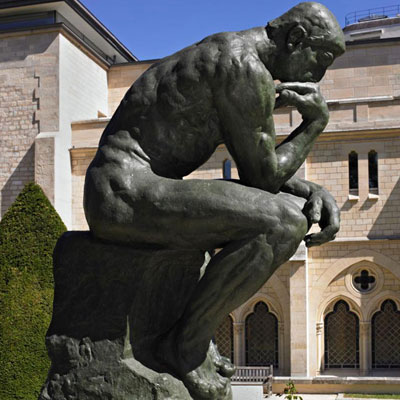
12/11/1840 – 17/11/1917
Auguste Rodin, born in 1840 in Paris, France, and died in 1917 in Meudon, France, was a world-renowned sculptor often considered the father of modern sculpture. Rodin established himself as an iconic figure in art through his exceptional talent for capturing the complexity of human emotions in his works.
He began his artistic career after being rejected by the École des Beaux-Arts in Paris, choosing to pursue practical training instead. Rodin worked as a craftsman before gaining recognition with works such as “The Age of Bronze” (1877), a sculpture so realistic that it was accused of being molded from the live model.
Rodin is best known for his expressive and detailed sculptures. Among his most famous works are “The Thinker,” a powerful representation of contemplation and human creativity, and “The Kiss,” embodying passionate love. These sculptures are part of his monumental project “The Gates of Hell,” inspired by Dante’s “The Divine Comedy,” which also includes “The Burghers of Calais” and “The Hand of God.”
Rodin’s style is characterized by intense realism and marked surface texture, giving his works a sense of life and movement. He often worked with live models, capturing the subtle nuances of human expressions and postures. Unlike his predecessors, he did not seek to idealize his subjects, preferring to show the raw truth of the human condition.
Rodin also had a significant influence on his contemporaries and future generations of sculptors. He paved the way for new approaches to sculpture, emphasizing emotion and inner dynamics rather than formal perfection.
In addition to his work as a sculptor, Rodin was an influential teacher, mentoring many promising artists. His studio in Meudon became a center of creativity and innovation.
